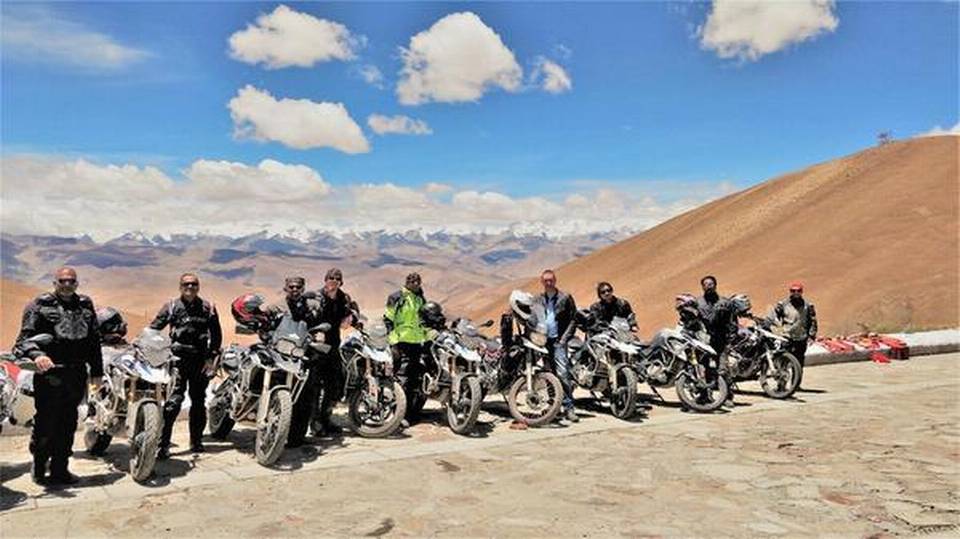 Tibet isn’t an easy region to navigate. But once you learn the know-hows, it takes your breath away
Tibet isn’t an easy region to navigate. But once you learn the know-hows, it takes your breath away
I read Tintin in Tibet in Class IV and since then wanted to visit the roof of the world — that mysterious land of icy peaks, meditating monks and serene monasteries.
So along with a band of motorcycling brothers from India, New Zealand, Australia, America, Ireland and England (in the last seven years we have watched each other’s backs and ridden across multiple continents), we decided on Tibet.
We landed in Beijing and took the much-hyped train to Lhasa. This 3,757-km ride, crossing the breadth of China in about 40 hours, takes one’s breath away, quite literally, as we reach a peak altitude of 16,627 ft. The oxygen being pumped into the cabins, along with mountain sickness medicine, kept us going all the way to Lhasa.
Lhasa was as exotic as I had imagined. Under a brilliant blue sky, monks in ochre robes and prostrating pilgrims jostled with selfie-obsessed Chinese tourists under the watchful eyes of the People’s Liberation Army (PLA). The Tibetans were friendly and seemed to feel a special bond with India. Many of them told us that it was a dream for them to visit India, while others broke into Bollywood songs and fondly recalled their days spent working or studying in India.
The highlight of our time in Lhasa was the visit to Potala Palace, the childhood home of the current Dalai Lama. Sadly, all references to him were expunged from the palace. The visit to the palace left me with a deep impression — both for the bruising climb and for its cultural and historical significance to Tibetan Buddhism.
Tourists need a special permit to visit Tibet, which had to be applied for weeks in advance by our motorcycling agency. Tourists have to be accompanied at all times by a Tibetan guide. Foreign licences are not recognised in Tibet and we spent a day at the licensing department where we were quizzed on our knowledge of local driving customs and duly weighed, eye-tested and photographed before being issued temporary Tibet licences. Maybe for this reason, we hardly met any foreign tourists along the way. Friendly Chinese tourists from the mainland, however, were everywhere.

Bikers during the road trip to Tibet | Photo Credit: By arrangement
Our 10-day ride covered nearly 3,000 kilometres, taking us from Lhasa up to Everest Base Camp, across Tibet, and down to Yunnan province in the mainland. At some points during the ride, we were barely 25 kilometres away from the Indian border.
My first view of Mt Everest (also known as Mt Qomolangma in Tibetan) took my breath away. We turned a corner and there she was, in all her majesty; a silent and mighty spectacle shrouded in mist and snow. We stared in awe for a long time before we parked our motorcycles and made a dizzying trek up to base camp. We spent a sleepless night at base camp before making our way down to Xigaze and the Chinese mainland.
The ride to Xigaze turned out to be spectacular, with views of majestic glaciers. Tibet is home to most glaciers in the world and sparkling streams branch out in all directions, irrigating the land. Tibet offered us a diversity that we had scarcely seen during any other ride. From craggy peaks and stunning glaciers to arid deserts, azure lakes and verdant forests — Tibet had it all.
The most impressive aspect about Tibet, however, was its people. Gentle in manner and spiritual, they exhibited a remarkable strength of character and spirit. One of my enduring memories of Tibet was the sight of monks prostrating themselves during their pilgrimage to Lhasa (a journey of several thousand kilometres). They would prostrate, whisper a mantra, rise, take a few steps and repeat it all over again. They would carry on like this for months, exposed to the elements and prostrating all the way to Lhasa. It was a form of penance, and we saw Tibetans of all ages doing this. I felt tremendous respect for a people who have held on to their culture and faith with tenacity.




 Print
Print Email
Email